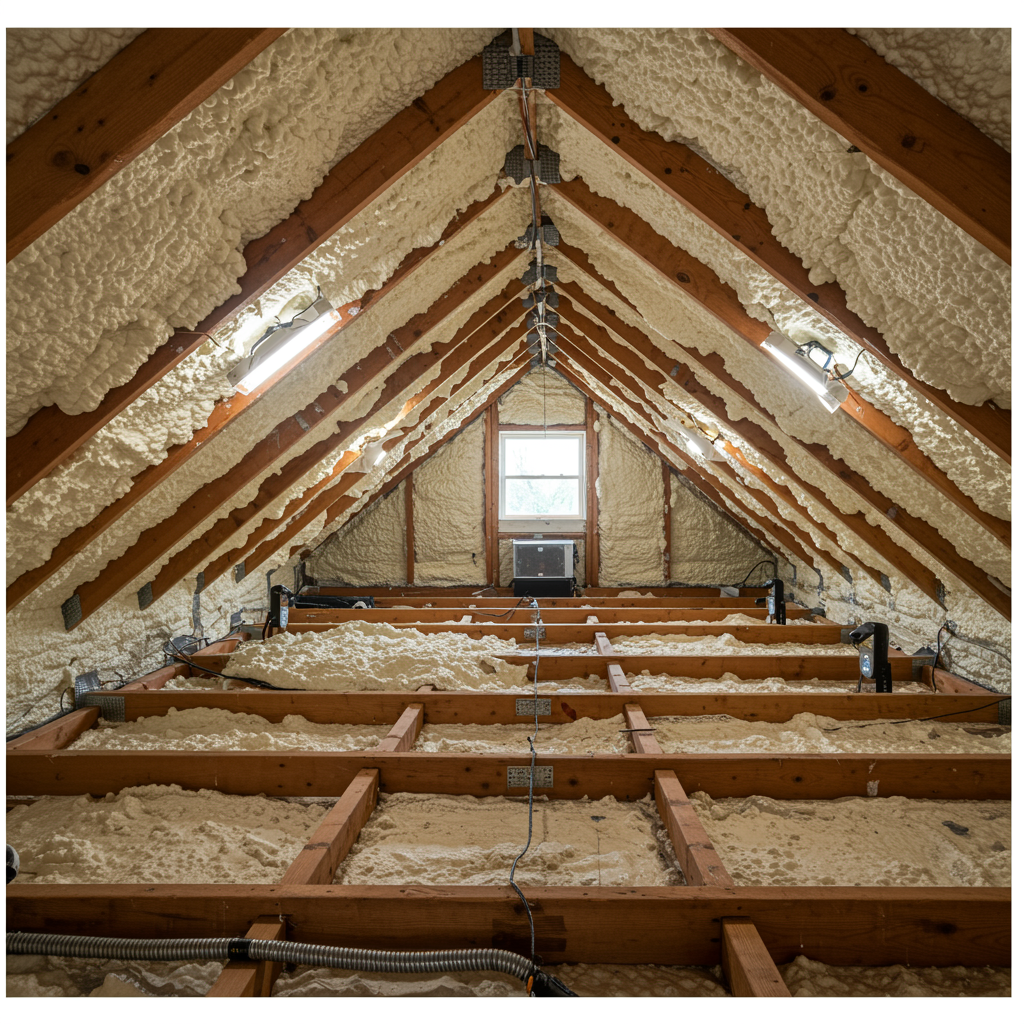Seal the Deal: Optimizing Your Home’s Envelope with Insulation and Air Sealing
Your home’s “envelope” – its roof, walls, and foundation – is your first line of defense against energy loss. Optimizing your home’s envelope with proper insulation and air sealing is paramount for energy efficiency. Think of it as wrapping your house in a cozy, protective blanket. Upgrading insulation in attics, walls, and crawl spaces can dramatically reduce heat transfer, keeping your home warmer in winter and cooler in summer. Modern insulation materials, such as spray foam, rigid foam boards, or blown-in cellulose, offer superior R-values (a measure of thermal resistance) compared to older fiberglass batts. Alongside insulation, air sealing is crucial. Gaps and cracks around windows, doors, pipes, and electrical outlets can account for a significant amount of heat loss. Professional air sealing services can identify and seal these hidden leaks, preventing drafts and maintaining a consistent indoor temperature. These foundational improvements not only save energy but also improve indoor air quality and reduce noise pollution, creating a more comfortable and quieter living environment.
Crystal Clear Savings: Investing in High-Performance Windows and Doors
Old, drafty windows and doors are notorious culprits for energy waste. Investing in high-performance windows and doors can dramatically reduce heat loss and gain, leading to substantial energy savings. Modern windows are engineered with multiple panes of glass (double or triple glazing), often filled with inert gases like argon or krypton, which significantly improve their insulating properties. Low-emissivity (Low-E) coatings are another game-changer, reflecting radiant heat while allowing visible light to pass through. This means your home stays cooler in summer by reflecting heat outwards and warmer in winter by reflecting heat inwards. Similarly, upgrading to insulated exterior doors with tight seals prevents drafts and improves security. While the initial investment in high-quality windows and doors might seem significant, the long-term energy savings, enhanced comfort, and increased home value make them a worthwhile renovation. Look for products with ENERGY STAR certification to ensure you’re getting top-tier performance.
Smart Climate Control: Upgrading Your HVAC System for Peak Efficiency
Your heating, ventilation, and air conditioning (HVAC) system is often the largest energy consumer in your home. Upgrading to a high-efficiency HVAC system is a cornerstone of modern energy-efficient renovations. If your furnace, air conditioner, or heat pump is more than 10-15 years old, it’s likely operating at a much lower efficiency than current models. High-efficiency furnaces boast Annual Fuel Utilization Efficiency (AFUE) ratings over 90%, while modern air conditioners and heat pumps feature higher Seasonal Energy Efficiency Ratio (SEER) and Heating Seasonal Performance Factor (HSPF) ratings, indicating less energy consumption for the same heating or cooling output. Consider technologies like ductless mini-split systems for targeted heating and cooling, or geothermal heat pumps which use the stable temperature of the earth to provide incredibly efficient climate control. Pairing these systems with smart thermostats allows for precise temperature scheduling, remote control, and even learning capabilities, further optimizing energy use based on your habits.
Beyond the Basics: Harnessing Renewable Energy and Smart Home Technology
While insulation, windows, and HVAC form the bedrock of energy efficiency, there are advanced steps you can take to push your home’s performance even further. Harnessing renewable energy and integrating smart home technology offers cutting-edge solutions for maximum savings and convenience. Solar panels (photovoltaic systems) are becoming increasingly accessible and efficient, allowing you to generate your own clean electricity and significantly reduce or even eliminate your utility bills. Battery storage systems can store excess solar energy for use during peak hours or power outages. On the technology front, smart home devices extend beyond thermostats. Smart lighting systems with LED bulbs consume minimal energy and can be controlled remotely or set to schedules. Energy monitoring devices can track your electricity consumption in real-time, helping you identify energy vampires and areas for improvement. From smart power strips that cut power to idle electronics to smart appliances that optimize their own energy use, integrating these technologies transforms your home into an intelligent, energy-saving ecosystem.

